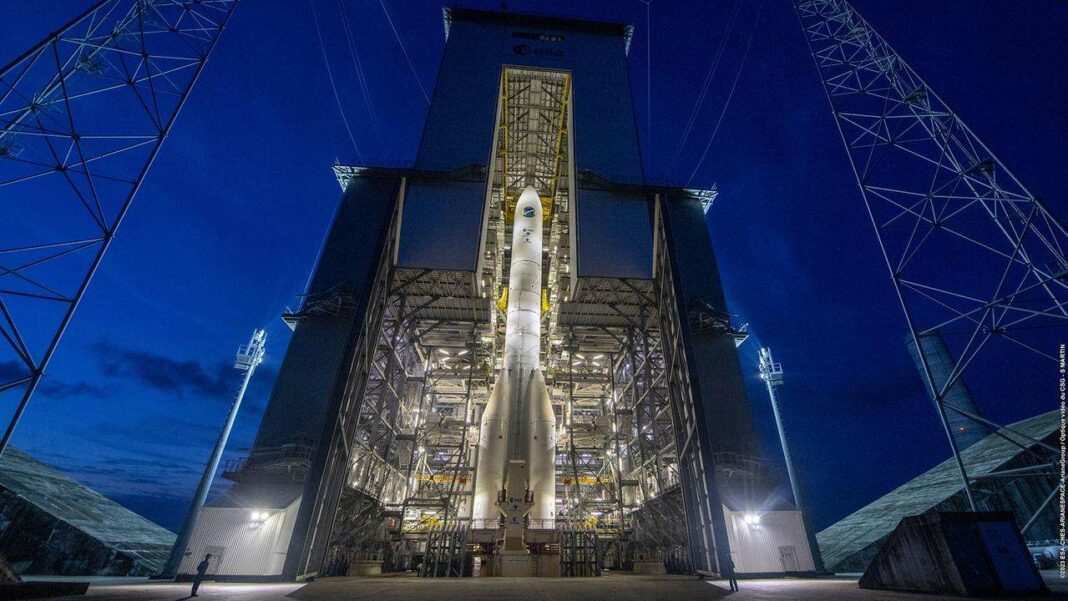2024 was a landmark year in space exploration, featuring significant events like Ariane 6’s debut flight, Starship’s record achievements, and China’s Chang’e 6 landing on the Moon’s far side. With over 240 rocket launches, SpaceX led the way. Despite setbacks, including delays in NASA’s Artemis program and challenges faced by other missions, the year highlighted advancements and ambitions in lunar and Martian exploration, while showcasing the resilience of emerging space startups.
A Milestone Year in Space Exploration: Highlights from 2024
The year 2024 marked a significant chapter in the realm of space exploration, showcasing groundbreaking missions such as the inaugural flight of Ariane 6, the historic landing of Starship, and the first retrieval of lunar rock from the Moon’s far side. While not every mission unfolded as expected, the year was undeniably pivotal.
With over 240 successful rocket launches globally, 2024 became the fourth consecutive record-setting year. Notably, SpaceX’s Falcon 9 was responsible for 128 of those launches, making it the first rocket type to surpass a hundred flights in a single year.
Ariane 6 Takes to the Skies
Europe celebrated a significant achievement with the return of the Ariane 6 heavy-lift rocket, which successfully launched from the Kourou spaceport in French Guiana on July 9. This flight followed nearly a year after the Ariane 5’s final launch. However, the mission faced challenges as the upper stage engine experienced issues, successfully reigniting just twice instead of the intended five times. Consequently, the upper stage was left in orbit as space debris, contrary to its design purpose.
In September, the Vega rocket made its last flight, while its successor, Vega-C, launched for the third time in December after a two-year hiatus. The previous Vega-C flight had ended in failure when the second stage malfunctioned, causing the rocket to crash into the ocean with two satellites aboard.
Exploring the Moon’s Hidden Side
The Moon’s synchronous rotation with Earth complicates direct communication during landings on its far side. In June 2024, the Chinese spacecraft Chang’e 6 triumphantly landed on this elusive side, collecting rock samples and returning them to lunar orbit. After two days on the surface, it transferred the samples to its ‘mother ship’ for their historic journey back to Earth, marking the first time lunar rock from the far side has been retrieved.
Moon Missions Hit Snags
China was not alone in its lunar ambitions. The IM-1 mission by Intuitive Machines made headlines in February for successfully landing a private spacecraft on the Moon, albeit with a slight mishap as the probe tipped over upon landing. While all onboard instruments remained operational, the sculpture ‘Moon Phases,’ intended for installation on the lunar surface, was unable to fulfill its mission due to the probe’s position.
Despite increasing lunar exploration, NASA’s Artemis program faced further delays. The Artemis-2 mission, aimed at returning humans to the Moon for the first time since the 1970s, is now slated for no earlier than 2026, with the anticipated first landing not occurring until 2027.
Starship’s Record-Breaking Accomplishments
SpaceX’s Starship, the largest rocket ever constructed, continued to break records following its first flight in 2023. In October, the rocket’s first stage was successfully captured by the ‘Mechazilla’ arms at the launch pad—a remarkable feat for a structure nearly 70 meters tall and weighing 275 tons. Additionally, Starship earned the title of the loudest rocket in history, with sound researcher Kent Gee noting that only atomic bombs surpass it in volume.
Pioneering Rocket Launches
In a notable achievement, HyImpulse, Germany’s first space startup, launched its SR75 sounding rocket from southern Australia. The flight, termed ‘Light this Candle,’ reached altitudes of 50 to 60 kilometers, just shy of the international definition of space. This mission utilized paraffin, or candle wax, as fuel, paying homage to Alan Shepard’s famous words during his historic flight into space.
Challenges for German Startups
In contrast, Rocket Factory Augsburg faced setbacks during a test of their RFA One rocket, which ended in an explosion at the Saxavord spaceport in August. Despite the disappointment, Rocket Factory Augsburg is gearing up for its first launch in the upcoming year, with fellow German startup Isar Aerospace also aiming for a 2025 launch.
The Final Journey of Ingenuity
The Mars helicopter Ingenuity, the first aircraft to fly on another planet, concluded its journey after an impressive 72 flights. Originally intended for just five flights in its first month, Ingenuity exceeded expectations and contributed to the Perseverance rover’s mission over three years. Unfortunately, its last landing resulted in damage due to battery depletion, leading to the loss of its rotors. Ingenuity earned the affectionate nickname ‘The Little Copter That Could’ for its remarkable achievements beyond its initial design.
Starliner’s Extended Mission
Boeing’s Starliner spacecraft launched in June with an anticipated eight-day mission to the International Space Station (ISS), but unforeseen complications delayed the return. Ultimately, the decision was made for the Starliner to return to Earth without its two astronauts, who will now integrate with the current ISS crew.
